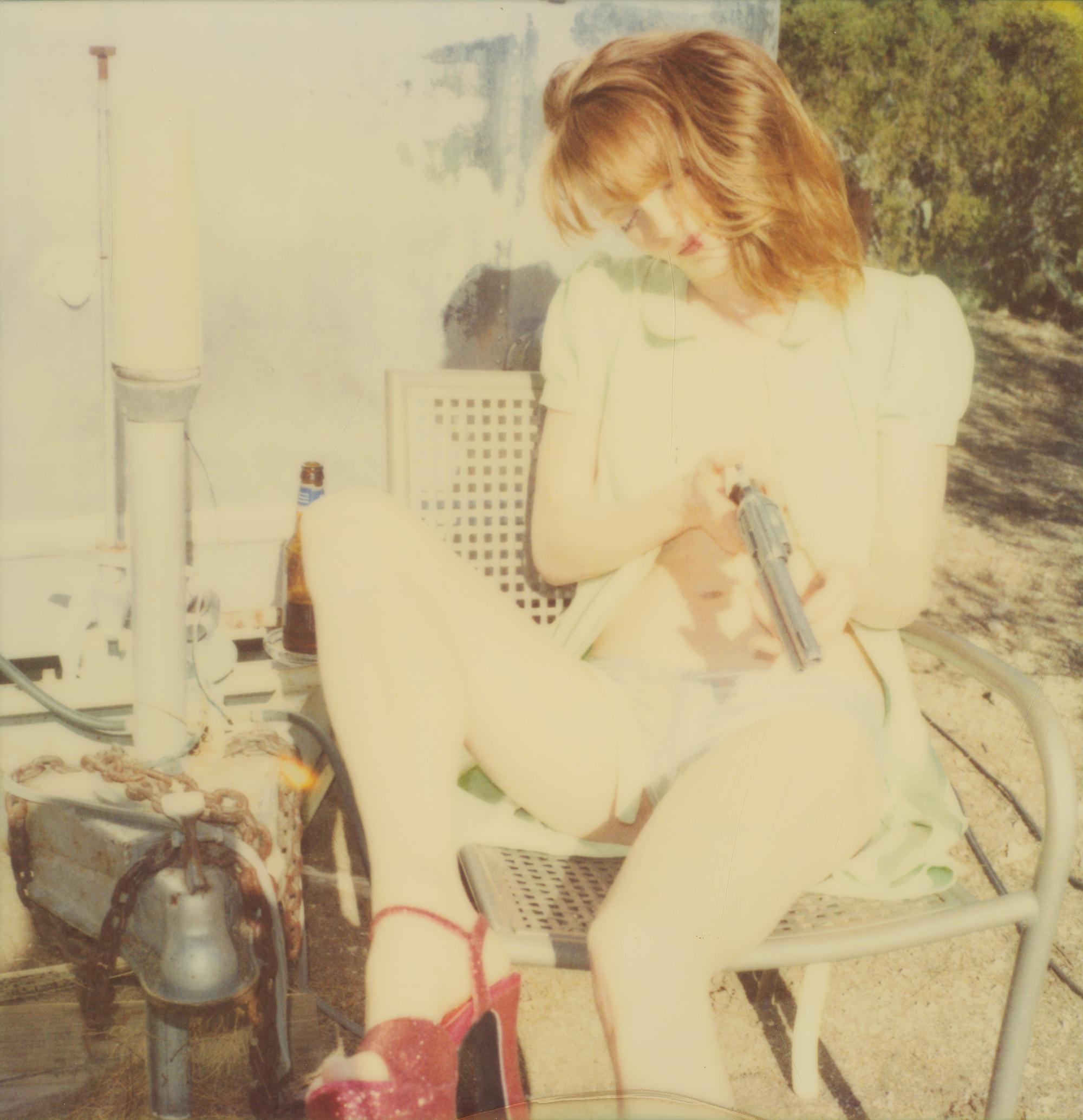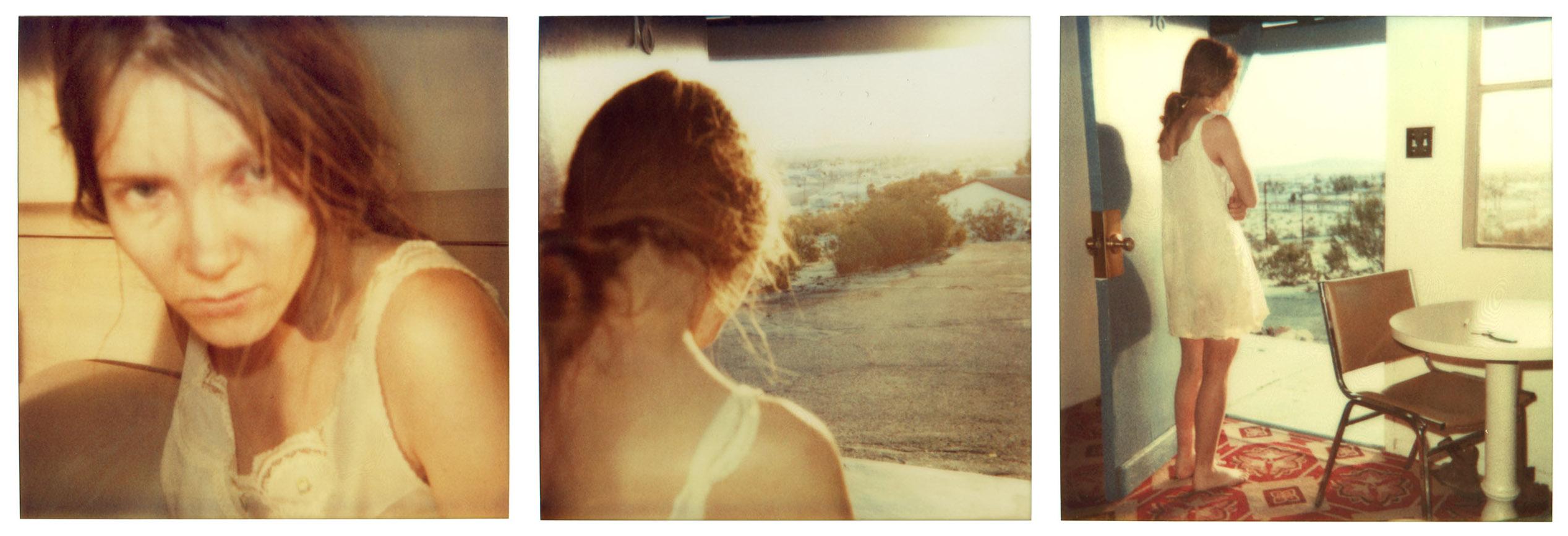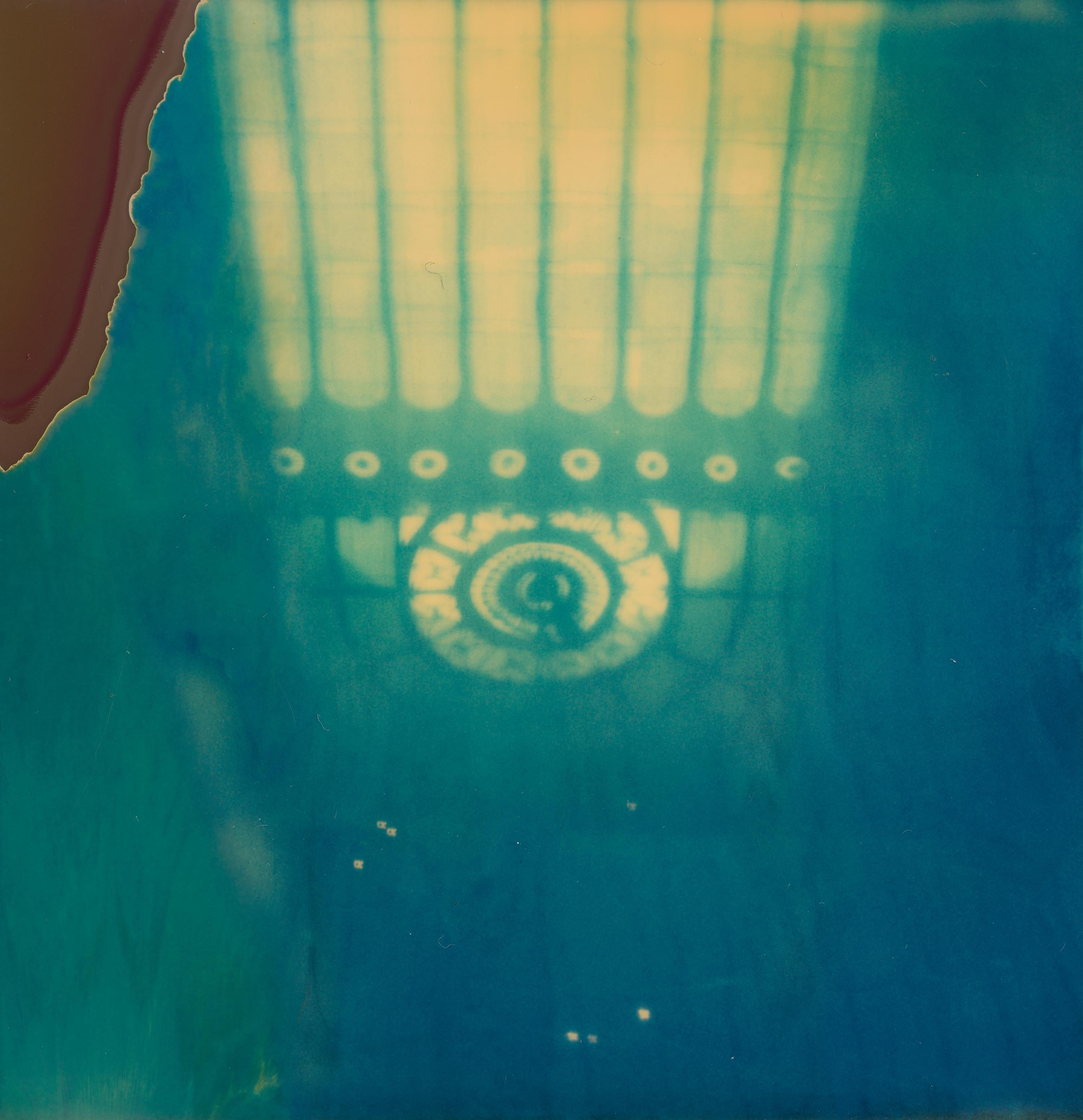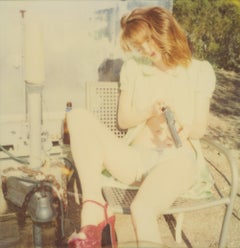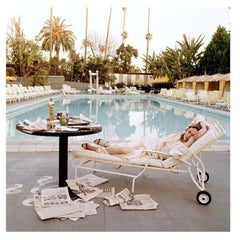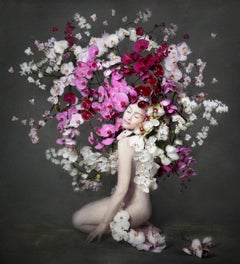There is no solution (Till Death do us Part) - 2008
20x24cm,
Edition of 10,
Archival C-Print print, based on a Polaroid.
Certificate and Signature label,
artist Inventory No. 8565,
Not mounted.
On offer is a piece from the movie: Till Death do Us part
Stefanie Schneider’s Till Death Do Us Part
or “There is Only the Desert for You.”
The works of Stefanie Schneider evoke Ed Ruscha's obsession with the American experience, the richness of Georgia O'Keefe's deserts and the loneliness of Edward Hopper's haunting paintings. So how exactly did this German photographer become one of the most important artists of the American narrative of the 20th and 21st century?
Stefanie Schneider was born and raised in Germany but lives and works in Southern California. Exploring the American dream and capturing it with Polaroid instant film. Situated on the verge of an elusive super-reality, her photographic sequences provide the ambience for loosely woven story lines and a cast of phantasmic characters that reflect a part of the narrators life told from her perspective. Often about love, communication. sexuality and relationships. Schneider works with the chemical mutations of expired Polaroid film stock. Chemical explosions of color spreading across the surfaces undermine the photograph's commitment to reality and induce her characters into trance-like dreamscapes. Like flickering sequences of old road movies Schneider's images seem to evaporate before conclusions can be made - their ephemeral reality manifesting in subtle gestures and mysterious motives. Schneider's images refuse to succumb to reality, they keep alive the confusions of dream, desire, fact, and fiction yet they also explore the relationship with the medium and the viewer. The wabi-sabi 'ness' of Schneider's work can not be denied or ignored. It's a step of acceptance of 'flaws', gaps and distortions. Missing pieces of the puzzle. The artist flaunts, uses and exposes the unknown using expired Polaroid instant film intentionally. Presents it. What you do with that is up to you. That missing part of the picture is for you to include yourself, you fill it in with yourself. That might be critical that it's there at all, missing and missing the entire point all together or by filling in the unknown with their own imagination. Even their own memories which then integrates the viewer and artist as one with limitless potential.
Stefanie Schneider's new photographic works tell fantastic stories about her adopted Californian home. She seeks out faded American myths and distills a charged reality in a very personal and surprising way. She uses out-of-date Polaroid film, and the blemishes caused by the degenerated film stock, - are included in the composition in a painterly way. Exposure mistakes and low budget movie effects are combined to alienating effect. Everything shimmers and flickers before our eyes. The artist plays with the authentic poetry of the amateur, mixing strangely dreamy staging with random photochemical events. In the 16-part work Frozen, which is characterized by a strangely transcendent mood in the lighting, film-still-like pictorial clusters come together to form a mysterious story, with the artist herself as the lonely protagonist. the aesthetic is reminiscent of early Lynch films. The components of the elliptically choreographed events are scenes from an enchanted, gleaming winter landscape, together with "staged snapshots" of a pale young woman in her underskirts, who radiates the troubled reality of a mirage with her sleep walking presence. The story is presented in the manner of cinematic flashbacks or dream sequences. Stage blood and a knife are used to evoke a crime of passion whose surreal attractiveness is derived from the scenic openness of what is shown. The deliberate use of old instant picture stock establishes in a richly faceted way the ephemeral quality of vulnerability and transience within a reality that is brittle from the outset. The American Stars and Stripes, recently updated as the absolute epitome of a patriotic signifier, is the subject of the 9-part work Primary Colors (2001). Schneider's reassuringly European view, free of undue emotion, presents the Stars and Stripes motif in a strangely alienated form: she shows stills with phases of fluttering violently in the wind, even torn in some cases, and the expired film stock emphasizes the fragility of the icon even more.
FlashART - Sabine Dorothee Lehner (translated from German by Michael Robinson)

